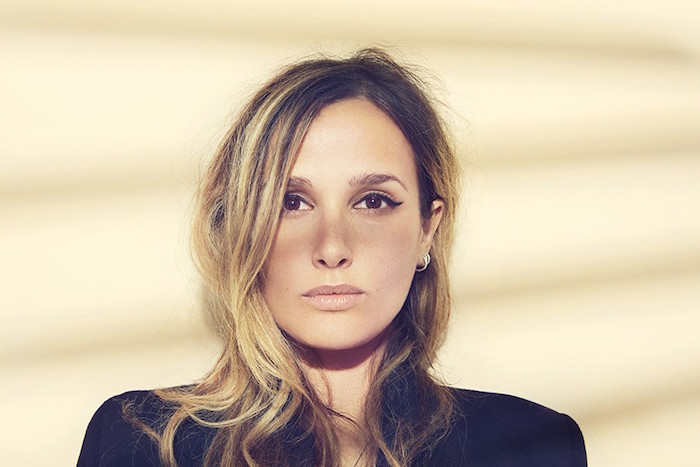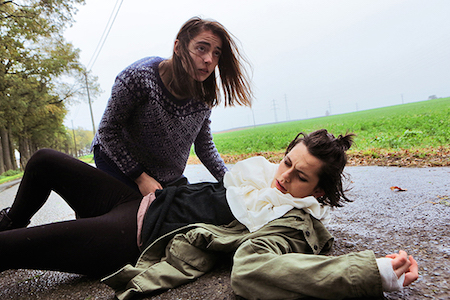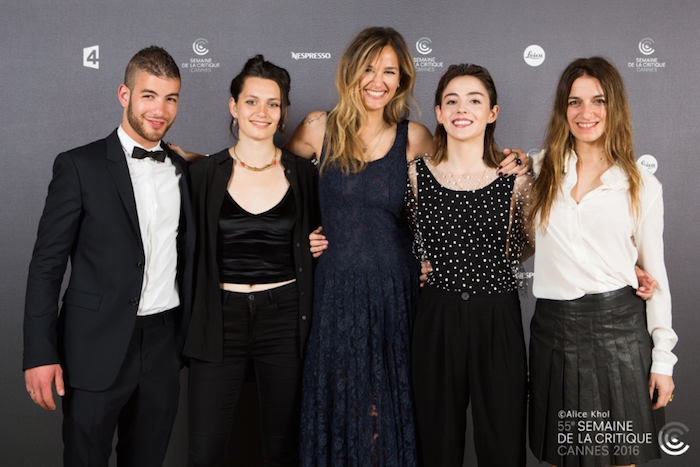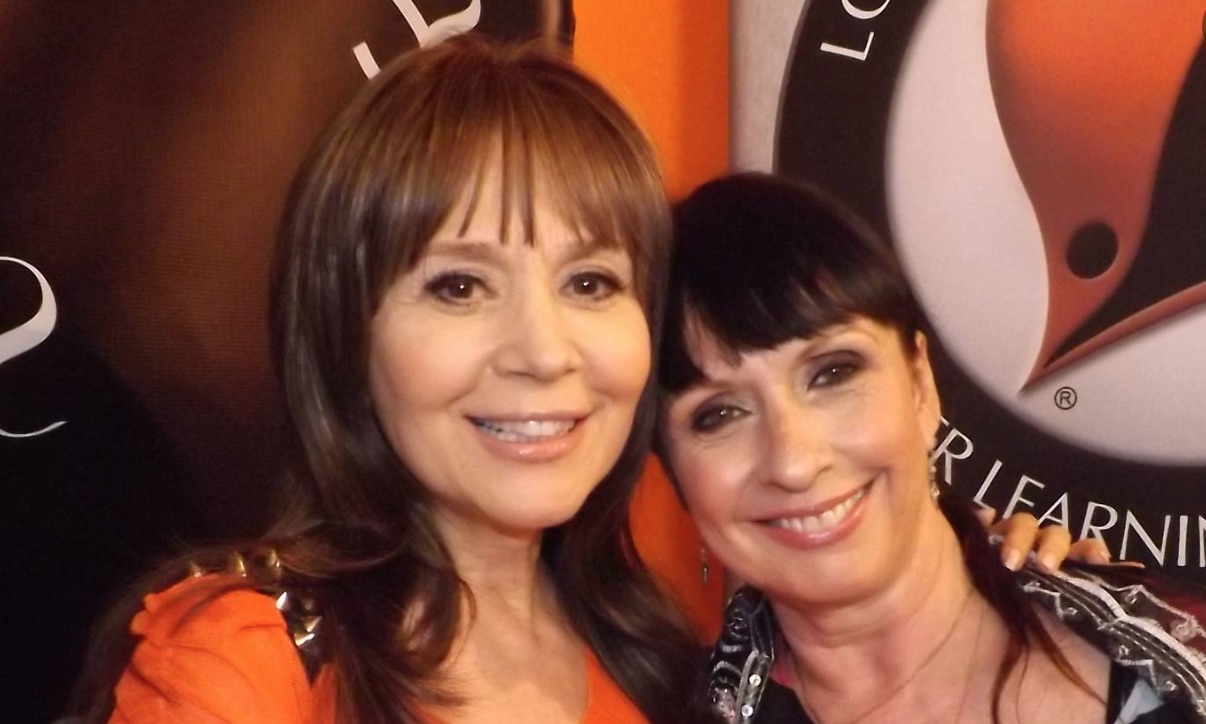WOLF AND SHEEP: THE SHAHRBANOO SADAT INTERVIEW
 Thursday, May 25, 2017 at 9:11AM
Thursday, May 25, 2017 at 9:11AM 2017 SYDNEY FILM FESTIVAL: Shahrbanoo Sadat was 20 years old when her story treatment for Wolf and Sheep earned her a prestigious Cinéfondation residency at the 2010 Cannes Film Festival. She was the youngest recipient of the honour in the festival’s history. The film, a slice-of-life drama about the villagers living in the mountains of Afghanistan that combines stark realism with local mythology, is told through the experiences of Sediqa, a determined young woman living an outsider’s life in a tight communal structure. It is Sadat’s recollection of a period from her childhood, so vividly realised and emotionally resonant, it earned her the 2016 Festival de Cannes C.I.C.A.E. Award for cinematic artistry. Ahead of the Sydney Film Festival’s Official Competition screening of Wolf and Sheep, Shahrbanoo Sadat spoke with SCREEN-SPACE from her home in the Afghanistan capital, Kabul…

SCREEN-SPACE: Describe your vision for the character of Sediqa and how the casting of the wonderful Sediqa Rasuli helped realise and develop the character.
SADAT: I was an outsider as a child, living in rural central Afghanistan in an isolated village between the mountains. I grew up with an observational point of view, as I couldn’t make any friends. I still keep this observational outlook, allowing me to better study the Afghan community. Wolf and Sheep is a film about a community and I needed a character like Sediqa, an outsider, to take us up to the mountains and into the village. She is just a part of that community, not carrying any specific story or judging those around her, but she helps the viewer understand the place, atmosphere and village life. Unlike her role, our actress Sediqa was a very social girl, becoming friends with almost everyone. When I met her at her school, I asked her to take off her scarf, something that every other girl had refused to do. But she didn’t refuse. She smiled, and took off her scarf for me. (Pictured, below; Sediqa Rusili as Sediqa in Wolf and Sheep)
 SCREEN-SPACE: As the title suggests, there is a great deal of conflict central to your narrative - male vs female; young vs old; interpersonal conflict amongst the boys and girls - all set in a land rife with conflict. How would you describe the role that conflict has upon your narrative?
SCREEN-SPACE: As the title suggests, there is a great deal of conflict central to your narrative - male vs female; young vs old; interpersonal conflict amongst the boys and girls - all set in a land rife with conflict. How would you describe the role that conflict has upon your narrative?
SADAT: I’m impressed by the power of nature on human beings. Afghanistan is a mountainous, rural country; a dry and tough environment (that) influences the nature of the people, who live in the valleys between mountains. This creates distance between people, many of whom come from various ethnicities. They mostly don’t like each other, instead believing they are different and better than others. But if you study their every day lives, you will see all have the same life, suffer from the same pain and have the same kind of problems. But they don’t see that as the wider picture. For me, such conflict is simply organic to the story; there was not a specific thought behind it. When I am talking about the everyday life of these people, it was just normal to put it in.
SCREEN-SPACE: The film is a celebration of the art of storytelling, with characters both old and young conveying imaginative, thoughtful stories. What importance does 'the storyteller' have in Afghani culture and how does that tradition manifest in your directing?
 SADAT: Afghans are very good storytellers. We like talking and we talk so much. We drink a lot of tea, because it gives us the opportunity to sit together and talk about almost everything. Sometimes when I listen to people I don’t understand if they are talking about reality. Their stories are a mixture of fantasy, wishes, lies, fiction and everyday life. I like this mixture. In a society where people are not allowed to dream, it’s so powerful to be able to express yourself through the stories. In the rural villages, I was very impressed when I saw almost every man talking about fairy tales, I connect this wish and desire for telling and listening to fairy tales to the love for women. It is a love that the society doesn’t really allow to grow. The community places limitations, tells us what our life should look like. We follow this thinking like a flock of sheep, because we are scared of being alone. We are told that if you choose your own way, there is the danger of ‘the wolf,’ which scares us even though none of us have seen the real wolf. Oral stories are the best material to learn about communities, especially the rural parts where stories and tales have such power in the life of people. People come to believe stories that have been made up. Our history has been influenced by stories that mix reality and the fantasy; the border between the two is so pale. (Pictured, above; Sediqa, right, with co-star Qodratollah Qadiri)
SADAT: Afghans are very good storytellers. We like talking and we talk so much. We drink a lot of tea, because it gives us the opportunity to sit together and talk about almost everything. Sometimes when I listen to people I don’t understand if they are talking about reality. Their stories are a mixture of fantasy, wishes, lies, fiction and everyday life. I like this mixture. In a society where people are not allowed to dream, it’s so powerful to be able to express yourself through the stories. In the rural villages, I was very impressed when I saw almost every man talking about fairy tales, I connect this wish and desire for telling and listening to fairy tales to the love for women. It is a love that the society doesn’t really allow to grow. The community places limitations, tells us what our life should look like. We follow this thinking like a flock of sheep, because we are scared of being alone. We are told that if you choose your own way, there is the danger of ‘the wolf,’ which scares us even though none of us have seen the real wolf. Oral stories are the best material to learn about communities, especially the rural parts where stories and tales have such power in the life of people. People come to believe stories that have been made up. Our history has been influenced by stories that mix reality and the fantasy; the border between the two is so pale. (Pictured, above; Sediqa, right, with co-star Qodratollah Qadiri)
 SCREEN-SPACE: The fantasy imagery in Wolf and Sheep - particularly, the night visitations of the Bull and Fairy into the village - is beautiful. Are you a student of fantasy cinema or is that imagery an integral part of your upbringing and culture?
SCREEN-SPACE: The fantasy imagery in Wolf and Sheep - particularly, the night visitations of the Bull and Fairy into the village - is beautiful. Are you a student of fantasy cinema or is that imagery an integral part of your upbringing and culture?
SADAT: I am so much in love with cinema verite, with the relationship between film and reality. Those scenes are the most ‘documentary’ part of the film, as they relate what the people in that community believe exists, even if it is a supernatural being. Many people have had that experience, of seeing the fairy or the wolf at night or early morning. For many audiences, those sequences convey magic realism, (but) for Afghans they are pure realism. My stories convey what those people believe to be true. They are more than stories. They are the mysteries of their lives. (Pictured, above; Patricia Alexandra Aparicio Dias as The Green Fairy in Wolf and Sheep)
SCREEN-SPACE: How are young filmmakers progressing in the current social climate of Afghanistan? Does an industry exist that allows them to explore and grow their talents?
SADAT: Our cinema industry is so poor. We have almost zero annual production of feature films. The cinema community is corrupted and the space for filmmakers like me, with no connection inside Afghanistan, is so small and narrow. There is no funding system, no co-productions with other countries, no producers. No one takes cinema seriously, as there is no money in it and no effort to make money with it. Stories are too shallow and reflect nothing about Afghanistan. Films about Afghanistan made by international filmmakers take the western touristic point of view, which has influenced local filmmakers, which bothers me a lot. Afghanistan is such a rich country in terms of story and we do need storytellers who can share these stories with the world.
WOLF AND SHEEP will screen June 11 and 12 at the 64th Sydney Film Festival. For ticket and session information visit the event's website.
READ our Sydney Film Festival Preview here.
















